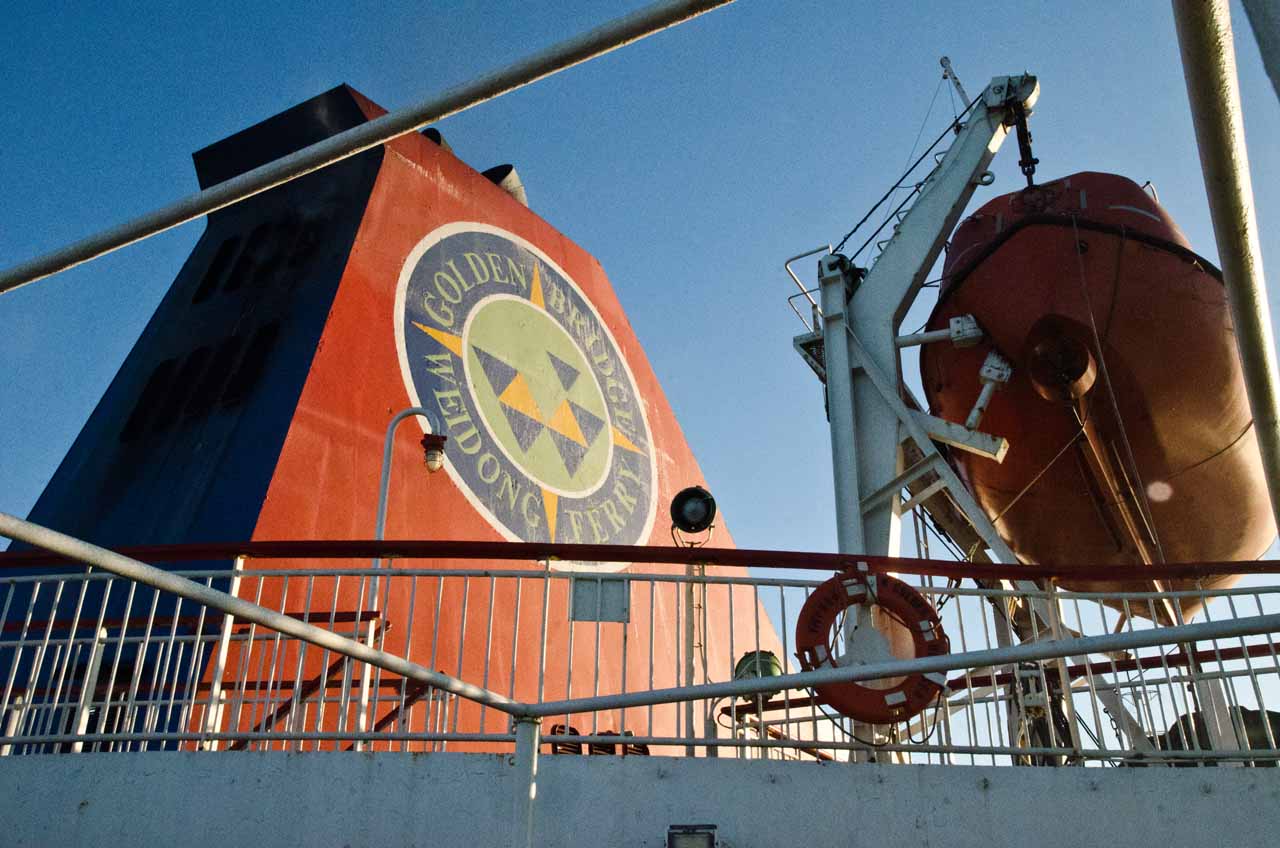 Incheon, South Korea. October, 2017.
Incheon, South Korea. October, 2017.


 Incheon, South Korea. October, 2017.
Incheon, South Korea. October, 2017.



View of Millak. View of Jangsan. Busan, South Korea. February, 2018.


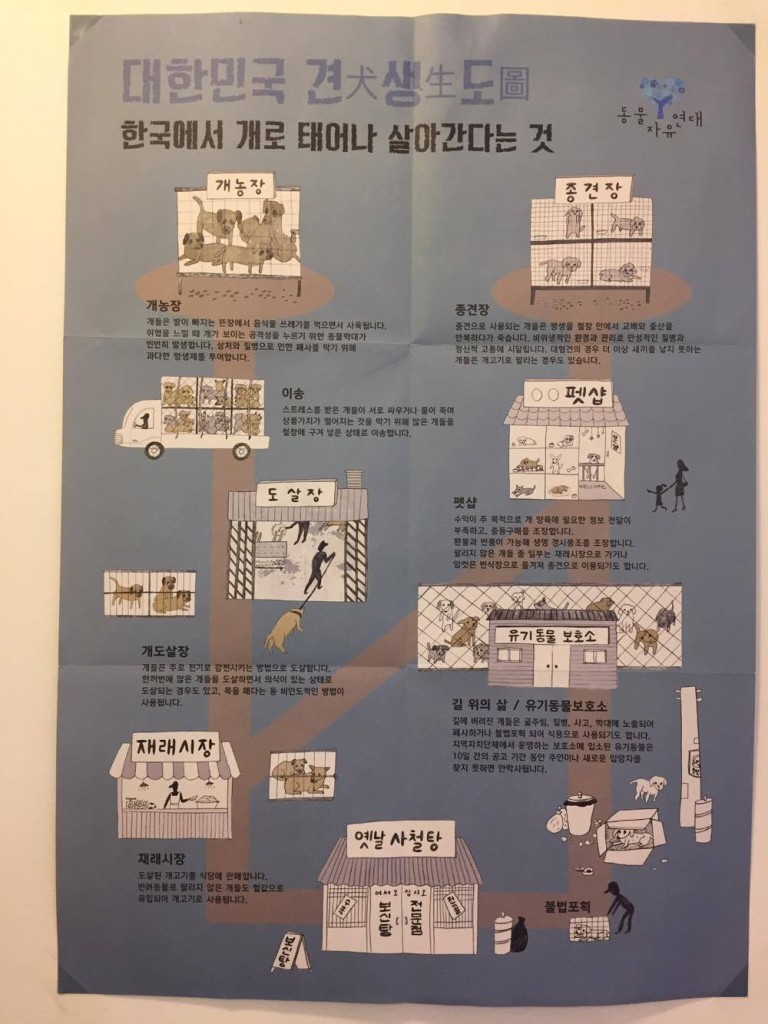 See more at Animals.co.kr and 동물자유연대/ Korean Animal Welfare Association page.
See more at Animals.co.kr and 동물자유연대/ Korean Animal Welfare Association page.

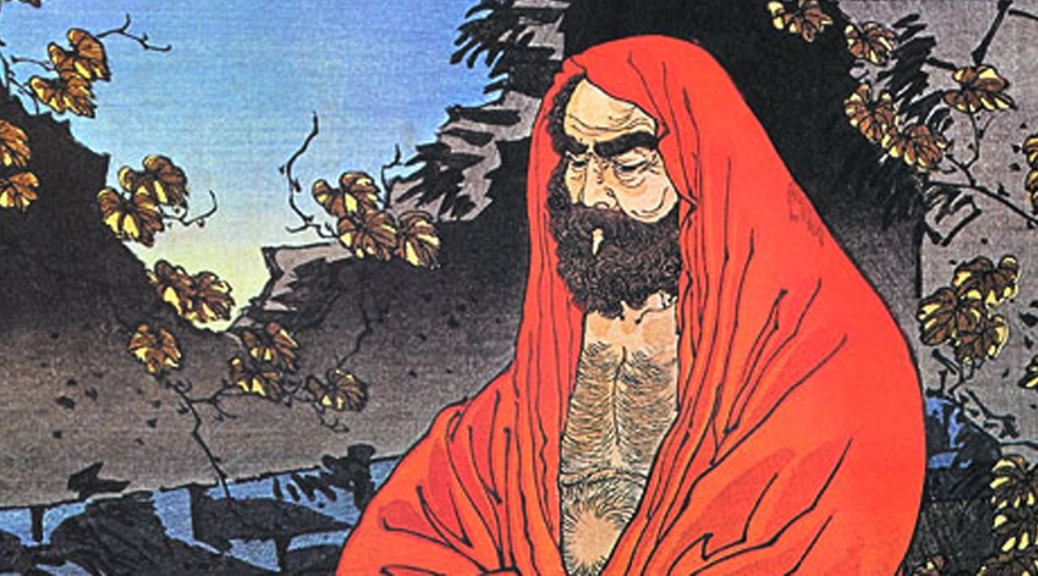

Bodhidharma, by Yoshitoshi, 1887. Via Wikimedia.
Da Mo took a monk’s spade and went with Shen Guang to the Drum Mountain in front of Shaolin Temple. The Drum Mountain is so called because it is very flat on top. Da Mo’s unspoken message to Shen Guang was that Shen Guang should flatten his heart, just like the surface of the Drum Mountain. On this Drum Mountain Da Mo dug a well. The water of this well was bitter. Da Mo then left Shen Guang on the Drum Mountain. For an entire year, Shen Guang used the bitter water of the well to take care of all of his needs. He used it to cook, to clean, to bathe, to do everything. At the end of the first year, Shen Guang went down to Da Mo and again asked Da Mo to teach him. Da Mo returned with Shen Guang to the Drum Mountain and dug a second well. The water of this well was spicy. For an entire year, Shen Guang used the spicy water for all of his needs. At the end of the second year, Shen Guang went back down to Da Mo and asked again to be taught. Da Mo dug a third well on the Drum Mountain. The water of this third well was sour. For the third year, Shen Guang used the sour water for all of his needs. At the end of the third year, Shen Guang returned to Da Mo and agains asked to be taught. Da Mo returned to the Drum Mountain and dug a fourth and final well. The water of this well was sweet. At this point, Shen Guang realized that the four wells represented his life. Like the wells, his life would sometimes be bitter, sometimes sour, sometimes spicy and sometimes sweet. Each of these phases in his life was equally beautiful and necessary, just as each of the four seasons of the year is beautiful and necessary in its own way.
As he sat in deep concentration, Bodhidharma abruptly realized that in an agonizing instant of fatigue, he had closed his eyes and dozed off to sleep. In anger at his weakness, he savagely tore at his eyes in self disgust, ripping out his eyelids and flinging them to the ground. As the leaf like lids of flesh lay bloody in the dirt, they sprouted miraculously into tea plants. Instinctively, Bodhidharma reached over and plucked a few leaves from the bushes to chew and suddenly felt as “one who awakens.” His mind clear and focused, he resumed his meditation.
From tsiosophy.com
—–
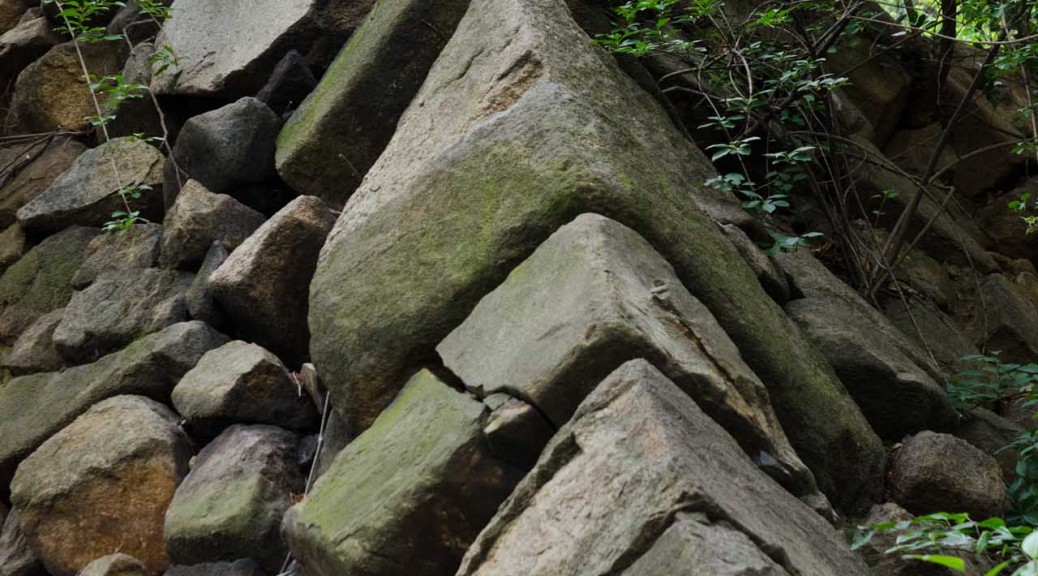
Headed over to Busanjin to explore the 400-year-old remains of a Japanese castle.
 Found lots of walkers.
Found lots of walkers.

 Found a couple of shrines.
Found a couple of shrines.

 Got off the main path and followed the trail around the hill.
Got off the main path and followed the trail around the hill. Found Mōri Terumoto‘s fortress walls.
Found Mōri Terumoto‘s fortress walls. 


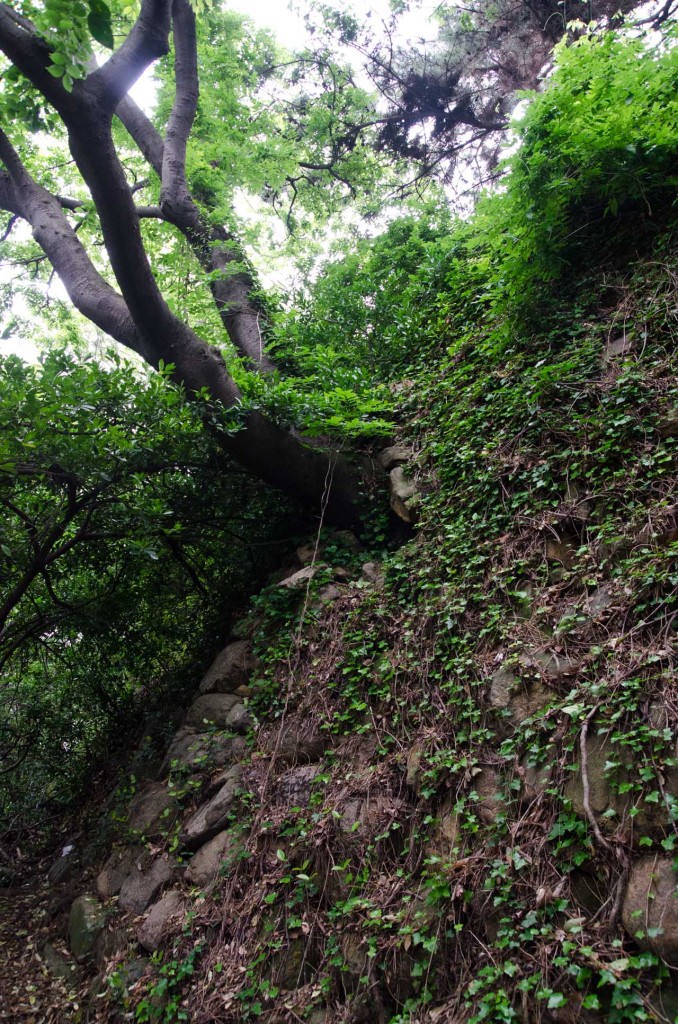

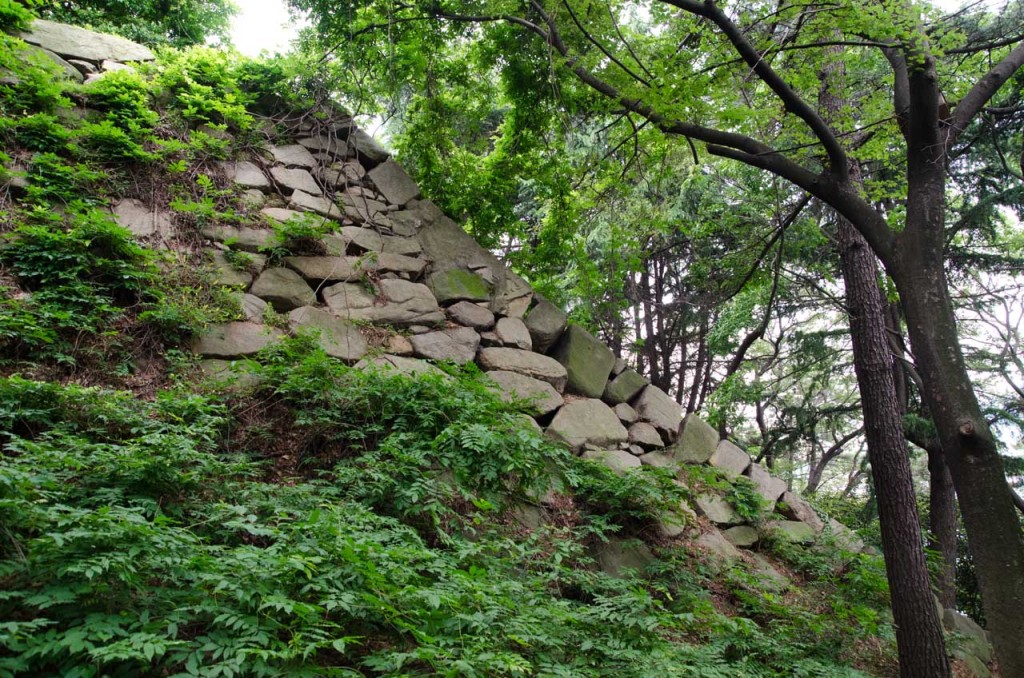
 Jinjiseong at the top of the hill in the Korean style of contruction.
Jinjiseong at the top of the hill in the Korean style of contruction. 






 West Gate reconstruction (1974) in Korean style.
West Gate reconstruction (1974) in Korean style.
See Japanese Castles in Korea 1592-98 post.
See Fortress Cats post.




 Feral cats guarding the remains of Jaseongdae (자성대, 子城臺) Fortress in Busanjin, Busan, South Korea. May 7. See Japanese Castles in Korea 1592-98 post. See Siege of Busanjin.
Feral cats guarding the remains of Jaseongdae (자성대, 子城臺) Fortress in Busanjin, Busan, South Korea. May 7. See Japanese Castles in Korea 1592-98 post. See Siege of Busanjin.


Turnbull, Stephen R., and Peter Dennis. Japanese Castles in Korea, 1592-98. Oxford: Osprey, 2007. Print.
Wikipedia list of Japanese castles in Korea.
Invasion led by the daimyo 大名 and general Toyotomi Hideyoshi (1536-98). p4
Korean Admiral Yi Sun-sin 이순신 (1545-1598).
Invasion began “When the Korean king refused to allow the Japanese” to pass through Korea to invade Ming China 明朝. p5.
Picture of site of wajo 倭城 of Yangsan and Hopo. p.5. (fortress 和城)
Map of castles in Jeolla and Gyeongsang province. p.6.
Picture of site of wajo of Ulsan. p.7.
“Busan Castle, an extension of the city wall on the edge of the sea, was in fact one of the best examples of a Korean fortress,” p. 9.
See Siege of Busanjin.
Dongrae Eupseong 동래읍성 東萊邑城 (fortress) may have been just a mountain fortress/sanseong 산성 山城 at the time of the invasion (?) p. 9.
The Japanese used Arquebuses p. 9.
Sketch of Ungcheon harbour p. 9.
Korean guerrillas p. 10.
Jinju fortress (first siege of Jinju “Korea’s greatest land victory of the war”) p. 10.
Picture of hill of Jaseongdae, Busanjin 부산진지성. p.11.
See wikipedia entry for Jaseongdae.
Yi Sun-shin impressed by the eupseong 읍성 of Ungcheon 웅천 p. 11.
Castles in Japan: “jinaimachi or temple towns associated with the self-governing communities of the True Land sect of Buddhism and defended by their Ikko-ikki armies” p.13.
Jinaimachi town near Osaka.
Pure Land Buddhism wikipedia entry
Fortress defense: “tora no guchi (tiger’s mouth) gateway passage” with a “90-degree turn” p.13.
Castle of Gupo drawing. p.14.
Clay was used to make the defense structures of a castle fireproof. p. 15.
Three Wajo in Geoje island. p. 16.
Seosaengpo 서생포 (Ulsan) p. 17.
“Seosaengpo was the most important Japanese castle in Korea.” p. 19.
Japanese fortresses in Tsushima. p. 18.